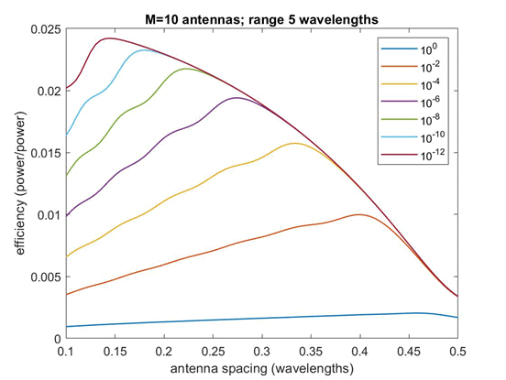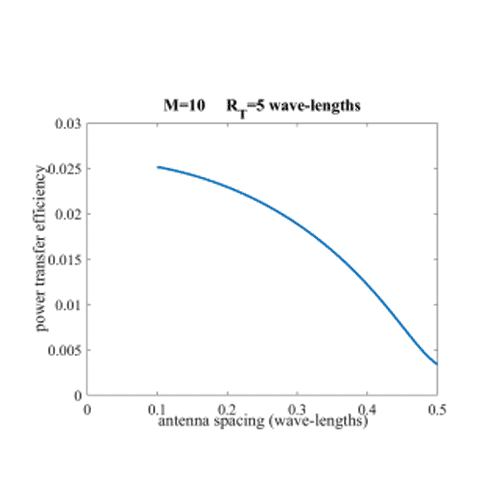Super-Directive Wireless Power Transfer

NYU WIRELESS P.I.s
- Tom Marzetta,
- Brian McMinn
Research Overview
Could a drone be powered wirelessly? There is no known physical principle standing in the way. But classical beamforming (either a mechanically-steered dish or a conventional phased array) is not the answer.
In 1943, Shelkunoff (Bell Labs) showed that strong mutual coupling, deliberately induced by placing antennas close together, could be exploited to create a super-directive beam: arbitrarily high angular resolution with an antenna array of arbitrarily small spatial extent. While there has been some success with numerically small arrays, no one has been able to scale up super-directivity to numerically large arrays. Huge driving currents are required: real power is nominally under control, but reactive power is correspondingly large, resulting in a high-intensity near-field. In addition, ohmic losses become prohibitively big.
Our research is a concerted effort to make super-directivity practical. Lines of investigation: 1) three-dimensional arrays; 2) super-conduction; 3) auxiliary antennas for controlling the reactive field; 4) meta-materials.
follow this research
*stay current with research in this area by completing this form

 2025 Brooklyn 6G Summit — November 5-7
2025 Brooklyn 6G Summit — November 5-7 Sundeep Rangan & Team Receive NTIA Award
Sundeep Rangan & Team Receive NTIA Award 2025 Open House
2025 Open House









